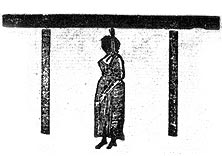
 |
||||||||||||||
| home | background | illustrations | distribution | highlights | search & browse | resources | contact us | ||||||||||||||
BACKGROUND |
||||||||||||||
|
|
||||||||||||||
 'ACT Against Prophaneness', 1693 'ACT Against Prophaneness', 1693View larger image |
|
How broadsides beganFor almost 300 years until the mid-19th century, broadsides filled the place occupied today by the tabloid press. Originally they were single sheets of paper, printed on one side only, designed to be read unfolded and posted up in public places. At first they were used for the printing of royal proclamations, acts, and official notices. Later they became a vehicle for political agitation and what is now known as ‘popular culture’, such as ballads and scaffold speeches. |

View this broadside |
The rise of newspapersThe mechanisation of the printing industry in the early 19th century saw a phenomenal increase in the output of all types of street literature, including broadsides.However by the middle of the century, the cheap newspaper and latterly the ‘penny dreadful’ (sensational novels) were beginning to take over from broadsides and other forms of street literature. Newspapers, which had been around since the mid 17th century, were no longer the prerogative of the privileged classes. They were becoming important as working-class reading. There were a number of reasons for this. One was the newspaper tax, which was reduced gradually from the 1830s and was eventually lifted in 1855. | |

View this broadside |
More literateAnother reason was the fact that the mass-circulation press set a premium on accurate and first-hand visual reporting. More members of the public were becoming literate and were no longer willing to accept the slipshod work of the broadside printers.By the 1850s, the penny used previously to purchase a broadside ballad could buy a part issue of a novel or a cheap newspaper or weekly magazine. | |
NLS home page | Digital gallery | Credits National Library of Scotland © 2004 | ||